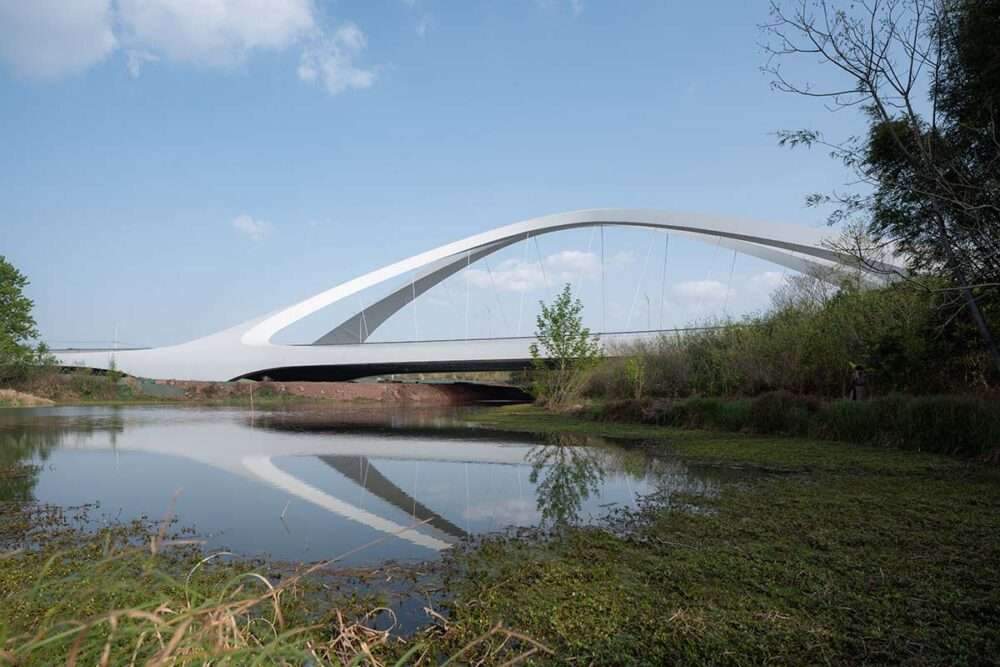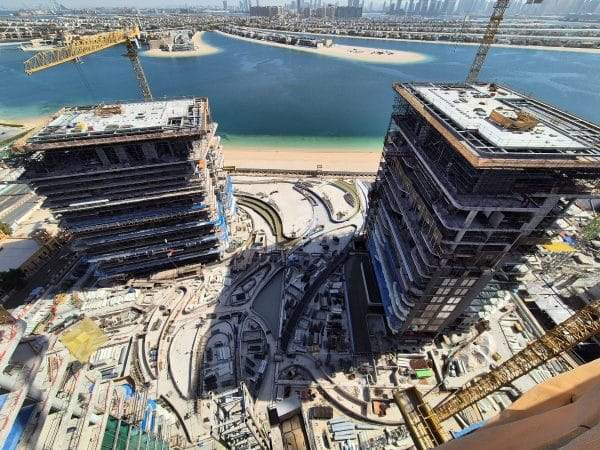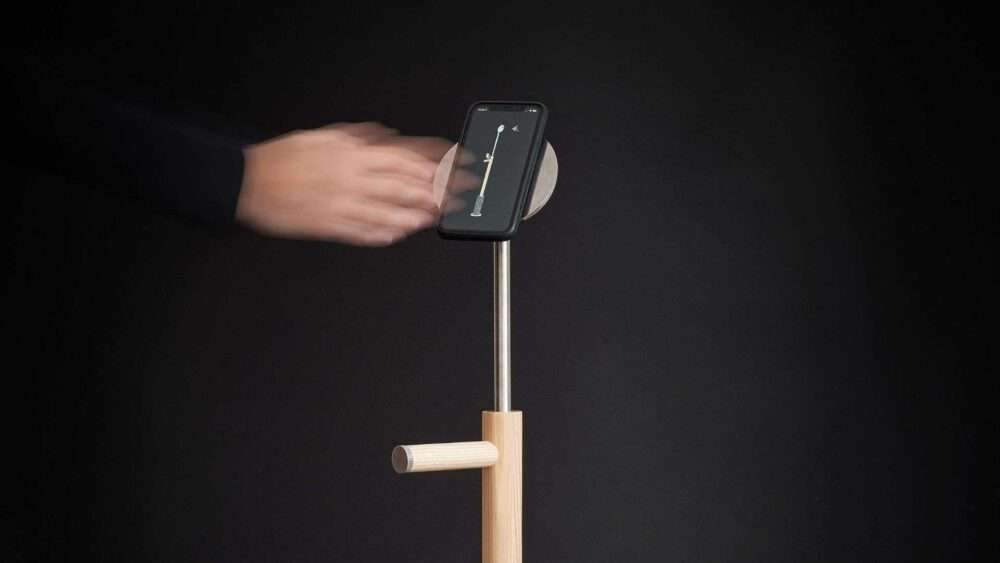Complete Jiangxi River Bridge made of dynamic curves
Zaha Hadid Architects has completed the Jiangxi River Bridge made of “dynamic curves” that crosses the Jiangxi River in Chengdu, China.
The new ZHA bridge has been completed as the first structure in a series of bridges on the Western Line Road in Chengdu.
The new 295-meter-long Chengdu First West Bridge crosses the Jiangxi River,
a tributary of the Tujiang River in China’s Sichuan Province.

Zaha Hadid engineers designed a bridge with a central length of 185 meters
and secondary extensions of 55 meters reaching the banks of the river.
Which distinguishes the region with its dynamic curves.
The new Chengdu West First Bridge is used as a road, bicycle and pedestrian bridge over the winding Jiangxi River.
This enables the West Lane Road to become the western part of the New Town Airport Ring Road and Cycle Road.

Design features
ZHA explained that since arches provide the most efficient bridge structure for spans of 120-250 metres,
This symmetrical bridge consists of two main steel arches that rise from either side of the road surface.
The office added: “As the steel arches rise, the arches tend together to touch their crown transversely,
which leads to the stability of the structure from lateral wind forces.”
The bridge’s sculptural appearance is derived from the dynamic curvature
of the piers and buttresses supporting the bridge which taper to their base arches and road surface.

Thanks to this, the bridge can be considered a “sculptural landmark” within Chengdu’s transportation infrastructure.
ZHA was commissioned to build the bridge after the 2019 design competition. During the design process,
Zaha Hadid Architects used structural analysis software on the digital model of the design.
Structural analysis checked all material self-weighing, superimposed dead load, live traffic loading,
In addition to the environmental considerations of wind and temperature, according to the company,
This analysis ensures that the structure and foundations are designed to exceed the standards required to build once-in-200-year weather events.”

The aspect ratio to span is approximately 1:6, the bridge arches are 30 meters high,
and are joined together at their base by longitudinal box girders that run along the edge of the road deck.
These ties resist the outward horizontal thrust of each arch and greatly reduce the horizontal loads on the bridge foundations.
The concrete abutments at both ends of the bridge include connectors that connect the road surface to the Western Line road surface.
With no foundations in the Jiangxi River, intermediate piers are located below the starting points of the arches on each river bank.
For more architectural news







